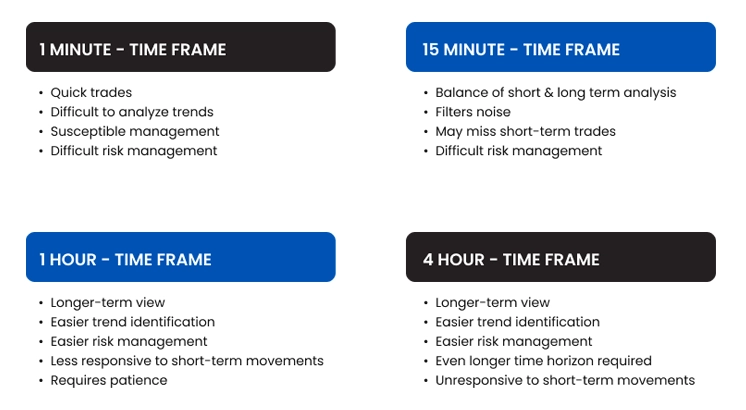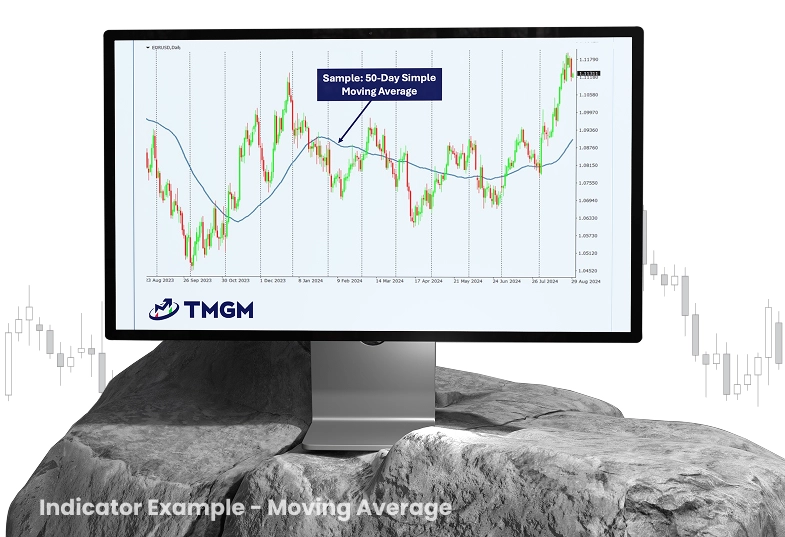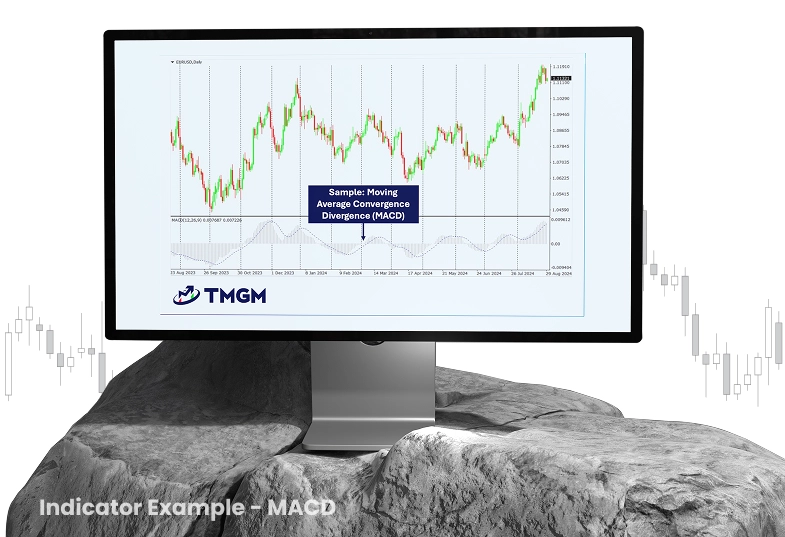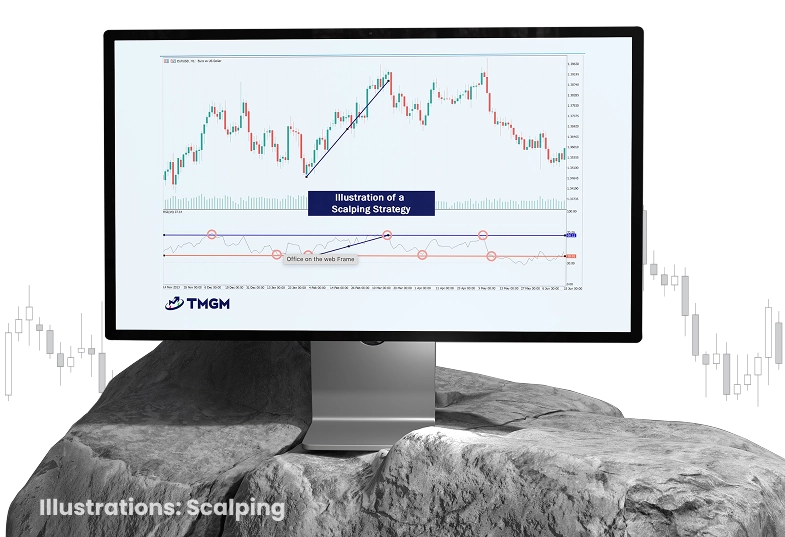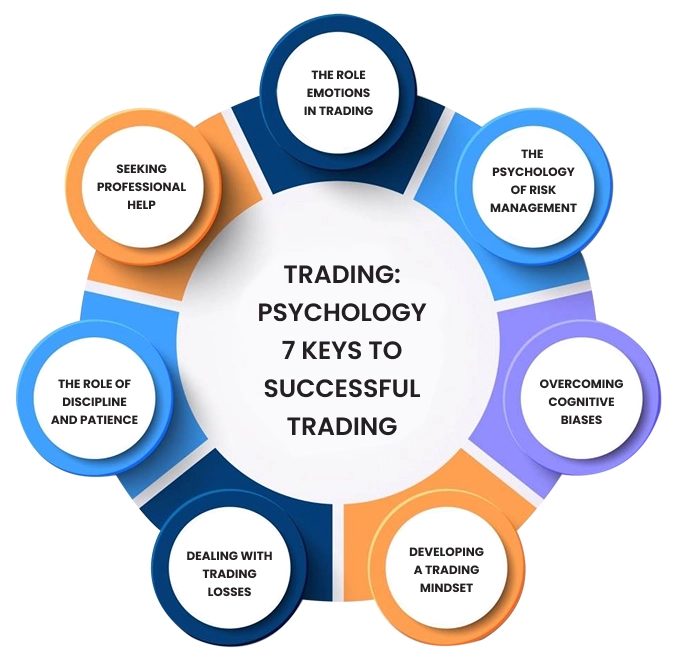

日內交易策略:操作、成本與風控詳解
日內交易使交易者能夠利用日內價格波動獲利,同時最大程度地降低隔夜風險。線上交易平台的便利性提升了其受歡迎程度,這些平台提供先進的工具、免佣金交易和槓桿。然而,成功不僅需要市場知識,還需要紀律、策略和強大的風險管理。
理解日內交易中的市場結構
市場結構
在應用任何差價合約(CFD)日內交易策略之前,了解你所交易市場的結構至關重要。不同市場(如股票、 外匯、期貨或加密貨幣)各有其獨特特性:
股票市場:受公司基本面、產業趨勢及整體市場情緒
影響外匯市場:受到宏觀經濟因素、利率差異和地緣政治
事件驅動期貨市場:受供需關係、季節性變動及現貨市場影響
加密貨幣市場:受技術發展、監管動態和市場接受程
度影響
理解這些結構差異有助於判斷哪些策略在特定市場環境中更有效。
為日內交易策略選擇合適的時間週期
日內交易者通常專注於較短的時間週期,但成功的交易者往往結合多周期分析:
1分鐘和5分鐘圖表:用於精準把握進出時機
15分鐘和30分鐘圖表:幫助辨識日內趨勢及支撐/阻力位
1小時和4小時圖表:提供更廣泛的日內趨勢背景
日線圖:用於識別關鍵水平位和整體市場方向
多週期分析能讓你更全面了解市場狀況,同時避開低週期圖中常見的假訊號。
圖 1:標題為「日內交易時間框架」的資訊圖表,解釋了日內交易中使用的不同時間框架及其各自的優勢和挑戰
交易者的核心風險管理原則
在深入具體交易策略之前,建立穩健的風險管理原則至關重要。其中一個關鍵原則是:單筆交易的風險不應超過帳戶總資金的1-2%,以確保即使遭遇虧損,也能維持資金的可控性。
同時,維持至少1:1.5的風險回報比(建議達到1:2或更高)有助於在控制風險的前提下實現盈利最大化。
設定硬性停損是保護交易者免受突發市場波動影響的必要手段,可防止重大回撤。同時,定期追蹤交易表現,分析各項績效數據,有助於辨識自身優劣勢,達到持續優化。
這些基本原則構成了穩定獲利、永續發展的日內交易策略基礎。
高獲利日內交易策略
趨勢跟隨策略:經驗證的有效方法
趨勢跟隨是日內交易中最可靠的方法之一,其核心理念是:價格在趨勢形成後往往會持續朝同一方向運行,直到出現顯著反轉。
這種策略專注於識別並順應市場方向,幫助交易者在趨勢延續期間抓住利潤機會,是新手與專業人士長期使用的實戰策略之一。
精通均線交易策略
圖2:技術分析圖表,展示歐元/美元(EUR/USD)貨幣對的日線圖,並應用了50日簡單移動平均線(SMA)
此策略透過移動平均線判斷趨勢方向與潛在入場點:
繪製兩條移動平均線,通常為20週期指數移動平均線(EMA)和50週期EMA
當短期均線上穿長期均線時,做多入場
當短期均線下穿長期均線時,做空入場
停損位可設定在最近的前期低點(做多)或前期高點(做空)
止盈可設定在預定目標位或當均線出現反轉訊號時離場
MACD:日內交易中的趨勢識別工具
圖2:本圖展示如何利用MACD指標來辨識趨勢方向、動量變化及歐元/美元交易對中的潛在進出場訊號。
移動平均收斂散度 (MACD)指標可協助交易者判斷趨勢的強度以及可能的市場反轉時機:
- 做多重訊號:在上升趨勢中,當 MACD 線上穿訊號線時可考慮進場做多
- 做空訊號:在下降趨勢中,當 MACD 線下穿訊號線時可考慮進場做空
- 訊號確認:建議結合其他指標(如 RSI 或成交量)進行驗證
- 離場時機:當 MACD 線再次與訊號線交叉並反向時,應考慮平倉
反轉交易策略:捕捉市場轉向時機
反轉策略的核心在於:在市場即將由當前趨勢轉向新趨勢時入場交易。它旨在儘早發現並利用趨勢反轉的起點,往往出現在價格觸及極端區域、形態突破或指標背離時。
超賣 / 超買反轉策略
圖3:本圖展示如何透過相對強弱指數(RSI)或隨機震盪指標等動量指標來辨識市場可能出現反轉的超買與超賣區域。
此策略透過使用超買/超賣指標(如相對強弱指數 RSI)來識別潛在的市場反轉點:
1. 當 RSI 高於 70 時,識別為嚴重超買市場;低於 30 時,視為嚴重超賣市場
2. 觀察價格與指標的背離(如價格創新高,而 RSI 沒有同步創新高)
3. 等待K線形態確認(如吞沒形態、鎚頭線、射擊之星等)
4. 入場時設定緊密止損,通常在極端價格點外側
5. 止盈可設在關鍵支撐/阻力位,或當價格動能減弱時平倉
雙頂與雙底形態策略解析
這是一種基於形態的反轉策略,旨在掌握市場在關鍵技術位的趨勢反轉機會:
- 辨識價格兩次測試同一支撐或阻力位的市場結構
- 雙頂型態:當價格跌破頸線時,做空
- 雙底型態:當價格突破頸線時,做多停損設置在形態的上方(雙頂)或下方(雙底)
- 停損設置在形態的上方(雙頂)或下方(雙底)
- 目標利潤通常等於形態高度的距離
突破策略:打造超額報酬的關鍵
圖4:說明阻力位突破,是技術分析中的核心概念,交易者可藉此判斷趨勢反轉或延續
突破策略的核心是利用價格突破既有阻力或支撐區時的強勢行情,捕捉新趨勢啟動或原趨勢延續的交易機會。
區間突破策略:搶佔行情啟動先機
識別價格在明確支撐與壓力位之間整理盤整的市場
等待價格逼近區間邊界,並伴隨成交量放大
突破壓力位時進場做多,跌破支撐位時進場做空
止損設在突破區間的內部稍微位置
止盈目標設為與區間高度相同的幅度距離
開盤區間突破策略:日內交易利器
此策略專注於市場開盤初期形成的波動範圍,用以尋找趨勢突破機會:
- 記錄開盤後前30分鐘或1小時的最高點與最低點,定義開盤區間
- 價格突破開盤高點時做多,跌破開盤低點時做空
- 止損設於開盤區間的相反端
- 可在關鍵支撐/壓力位止盈,或採用移動止損保護收益
剝頭皮交易法:快速小額獲利
圖5:展示在歐元/美元(EUR/USD)外匯圖表1小時週期中所採用的剝頭皮交易策略
剝頭皮交易透過每日多次交易、快速進出場來捕捉微幅價格波動。此策略需要極高的精準度、執行速度與風險控制能力。
點差剝頭皮策略:快速搶賺微小利潤
此技術在外匯與期貨市場表現尤為出色:
- 鎖定買賣差價極小的交易品種
- 依據當前短線趨勢方向進場交易
- 每筆交易目標利潤為 5–10 點/跳動點
- 設置緊密止損,一般為 2–5 點/跳動點
- 幾分鐘內完成平倉,快速出場不留倉
訂單流剝頭皮法:掌握市場深度動態
這是一項高級剝頭皮技術,藉由分析訂單流來判斷機構買盤與賣壓:
- 利用成交明細(Time & Sales)與市場深度資料(DOM
- 尋找大量掛單或買賣單失衡現象
- 順應主導方向的訂單流進場操作
- 當訂單流失衡消退時快速離
- 執行極嚴格的風險控管,預先設好止損位
跳空交易策略
跳空交易是指利用市場前一日收盤價與隔日開盤價之間形成的價格缺口來獲取交易機會。
跳空回補策略:交易隔夜跳空
辨識那些開盤與前日收盤形成顯著跳空的股票或期貨
分析跳空類型:普通跳空、突破跳空、延續跳空、耗盡跳空
對於普通跳空,可反向操作,預期價格將回補缺口
對於突破或延續跳空,可沿跳空方向建立順勢倉位
止損應設在關鍵支撐/壓力位之外
止盈可設定為跳空回補完成或達到預設目標價位
日內交易策略必備技術分析工具
基本指標
成功的日內交易者通常會搭配以下技術指標,以建立有效的交易判斷邏輯:
- 移動平均線(SMA/EMA):識別趨勢方向與潛在支撐/壓力
- RSI(相對強弱指數):衡量市場是否進入超買或超賣狀態
- 隨機震盪指標(Stochastic Oscillator):協助判斷可能的短期反轉點
- 布林通道(Bollinger Bands):衡量市場波動性與預測價格突破時機
- VWAP(成交量加權平均價格):作為日內交易的重要價格參考線
- ATR(平均真實波幅)止損設定:根據當前波動情況動態調整止損點位
重點建議:不宜同時使用過多重複功能的技術指標,應根據不同需求選擇互補性強的組合工具。
每位日內交易者都應掌握的圖表形態
識別高機率的圖表形態能有效提升交易績效,因為這些形態能提供未來價格變動的重要參考。延續形態,如旗形、楔形與三角形,通常表示當前趨勢有可能持續發展;而反轉形態,像是頭肩頂/底、雙頂/雙底與孤島反轉,則暗示市場即將出現方向性的轉變與關鍵拐點。
此外,蠟燭圖形態如吞噬形態、十字線、錘子線與流星線,能有效揭示市場情緒與動能的轉變。這些圖形幫助交易者找出理想的進場與出場點位,同時也提供自然的止損與停利位置,有助於強化風險管理與策略執行的整體品質。
提升進場準確度的成交量分析技巧
成交量是確認價格行為的重要依據,能為交易者提供關鍵洞察。觀察成交量的劇增,通常可用來驗證可能出現的反轉或突破行情;而當價格創下新高或新低,卻未伴隨成交量放大時,則可能意味著趨勢正在減弱。此外,透過將當前成交量與平均成交量進行比較,也能幫助交易者識別市場中的異常波動與潛在機會。
對於日內交易者而言,在採取行動前,應始終結合成交量來驗證價格訊號,以提高交易的準確度與勝率。
成交量可確認價格行為,是判斷交易機會的關鍵指標:
- 觀察成交量暴增:往往預示可能出現反轉或突破,是重要的確認訊號
- 識別成交量背離現象:當價格創新高/新低,但成交量未同步,可能顯示趨勢疲軟
- 活用相對成交量:將當前成交量與平均量比較,可發現異常活躍度與潛在突破訊號
成交量應用於價格確認,可大幅提升交易決策的可靠性與準確性。
實盤交易中的情緒管理
情緒控管是區分獲利日內交易者與失敗者的關鍵因素之一。恐懼常會導致交易者過早平倉,或在面對有效進場機會時猶豫不決。貪婪可能導致持倉時間過長,或者在沒有明確依據的情況下增加倉位,從而承擔過度風險。而所謂的「報復性交易」則尤其危險,這種行為源於想要藉由高風險操作快速挽回虧損。成功的日內交易者會發展出系統性的應對方法,來控制情緒反應並維持紀律性執行。
成功日內交易策略的心理要素
實盤交易中的情緒管理
情緒控管是區分獲利日內交易者與失敗者的關鍵因素之一。恐懼往往導致交易者提早平倉,或者在面對應該進場的交易信號時猶豫不決。貪婪可能使人過度持倉或盲目加碼,從而增加不必要的風險。最具破壞性的行為是「報復性交易」,即在虧損後試圖透過高風險交易來快速翻本,結果往往適得其反。成功的交易者通常會建立系統化的方法來管理情緒,確保在市場波動中依然保持冷靜與紀律。
培養正確的交易心態
建立健康的交易心態對於長期穩定獲利至關重要。具備機率思維能幫助交易者認識到,沒有任何一筆交易是百分百穩賺的,真正的成功來自於長期執行高勝率策略。過程導向的思維能引導交易者將焦點從當前盈虧轉向策略執行與紀律落實。學會對結果保持情緒抽離,可以避免情緒因波動而影響決策。同時,持續學習的態度也能讓每一次交易都成為優化系統與成長的契機。
建立紀律以實現持續獲利
在日內交易中,紀律意味著必須嚴格遵守交易計劃與風險控管原則,不能有任何例外。交易者應僅在符合預設條件時才執行操作,而不是被情緒或市場雜訊所驅使。撰寫詳細的交易日誌,是實現自我反省與持續進步的重要工具,能幫助交易者追蹤策略落實情況、記錄心理變化,並發現潛在問題。透過定期回顧與調整,交易者可以優化策略並穩步提升整體表現。
圖 6: 成功交易的心理層面,概述了交易者應熟練掌握的七大關鍵原則。
建立你的日內交易策略系統
一份完整的交易計劃對於維持日內交易中的一致性與紀律性至關重要。該計劃應明確規定要交易的市場與時間週期,並包含明確的進場與出場條件,用以識別交易機會。倉位控制準則有助於風險管理,而風控規則則能保護本金不受重大損失。建立固定的交易時間表與執行流程有助於養成紀律性,而績效回顧機制則能持續優化策略。一份良好的計劃應該清晰到他人也能準確地照著執行。
如何回測你的日內交易策略
在投入真實資金之前,交易者必須對策略進行歷史回測,以驗證其表現與穩定性。這包括收集所選市場的歷史數據,並將策略規則應用於過去的價格走勢上。
記錄模擬交易與結果能提供對策略獲利能力的洞察,而勝率、盈虧比、回撤等關鍵績效指標則能協助評估策略的風險與一致性。根據這些回測結果,交易者可進一步優化策略,以提高其實戰效果。
前測與模擬交易的最佳實踐
完成歷史回測後,交易者應在實際市場條件下進行模擬交易(即紙上交易),以測試執行過程中可能出現的實務問題,並觀察自身的情緒反應。
這一階段是進行最後調整的良機,能幫助策略更貼近實際市場需求。當過渡到實盤交易時,應從小部位開始操作,以在控制風險的同時逐步建立市場信心。
日內交易策略中的風險管理
風險管理是成功日內交易的基礎。即使是最具潛力的交易機會,若缺乏堅實的風控策略,也可能導致重大虧損。以下是一些有效的風險控管方法:
部位管理基礎
部位大小決定你在單一交易中暴露多少資金風險。
每筆交易的風險比率:建議每次交易僅承擔帳戶總資金的 1% 至 2%。
部位計算公式:部位大小 = 可承受虧損金額 ÷ 止損點數(點、Pip 或價格)
控制回撤以維持續戰力:若帳戶為 $20,000 美元,每筆交易風險控制為 1%(即 $200 美元),止損設為 20 點,則每點價值為 $10 美元
杠桿使用的風險:高槓桿可擴大報酬,但也會放大虧損。使用槓桿時應根據個人風險承受能力設定,切勿過度操作。
設定止損保護本金
止損單可在行情不利時自動止出,是資金保護的基本工具。
常見止損類型:
- 固定止損:設定為資金比例(如虧損不超過 1%)。
- ATR 止損法:依據平均真實波動範圍(ATR)動態調整止損距離。
- 技術型止損:設置在技術支撐/阻力、趨勢線或均線處。
- 追蹤止損:隨行情推進,動態上移止損位,保障利潤同時控制下行風險。
舉例:
- 若以 $100 美元買入資產,設 2% 固定止損,則止損點為 $98。
- 在外匯交易中,若 ATR 為 15 點,止損可設為 1.5 倍 ATR,即 22.5 點。
控制回撤,保障交易續航
回撤是指資金在連續虧損期間的下降幅度。
最大回撤限制建議:若單月回撤超過 5%-10%,應暫停
交易並檢視策略。風險報酬比設定:建議至少維持 1:2 的風險報酬比。
連虧時調整策略:若連續虧損出現,應將單筆風險減半,並重新審視市場環境或執行面是否出現問題。
舉例:
一名交易者以 $10,000 開始交易,在遭遇 $1,000(10%)回撤後,縮小交易部位,並聚焦於高勝率信號,提高策略穩定性。
透過 TMGM 強化您的日內交易策略
无论您专注于趋势跟随、突破交易还是剥头皮策略,TMGM 都能提供专业的交易基础设施、先进的交易工具,以及我们學院式的教育資源,帮助您精准执行交易计划。
要實施獲利的日內交易策略,不僅需要知識,還需有適當的交易環境。TMGM 為交易者提供理想的平台,助您高效執行各類策略:
- 閃電般的下單速度:以最低滑點完成日內交易操作
- 競爭力點差,提升交易效率:在所有市場享有緊密點差,最大化利潤潛能
- 先進的交易平台功能:專業級圖表工具、技術指標與下單系統一應俱全
- 多資產交易支援:靈活操作於外匯、股票、指數、商品與加密貨幣市場
- 頂尖風險控管工具:使用保證止損等功能,保護資本安全
- 完整教育資源,助新手成長:透過 TMGM 的學習平台不斷強化您的交易技能
- 24/5 專家客服支援:隨時獲得經驗豐富的交易顧問協助
不論您偏好趨勢策略、突破策略或是高頻短線操作,TMGM 都能為您提供專業級基礎設施、進階交易工具與教學資源,幫助您精準執行每一筆交易。
準備好實踐這些高效策略了嗎?立即在 TMGM 開立帳戶,體驗專業交易環境如何改變您的交易表現。
今日更明智地進行交易






賬戶
賬戶注資
交易
